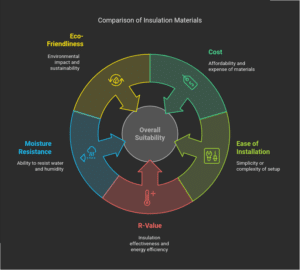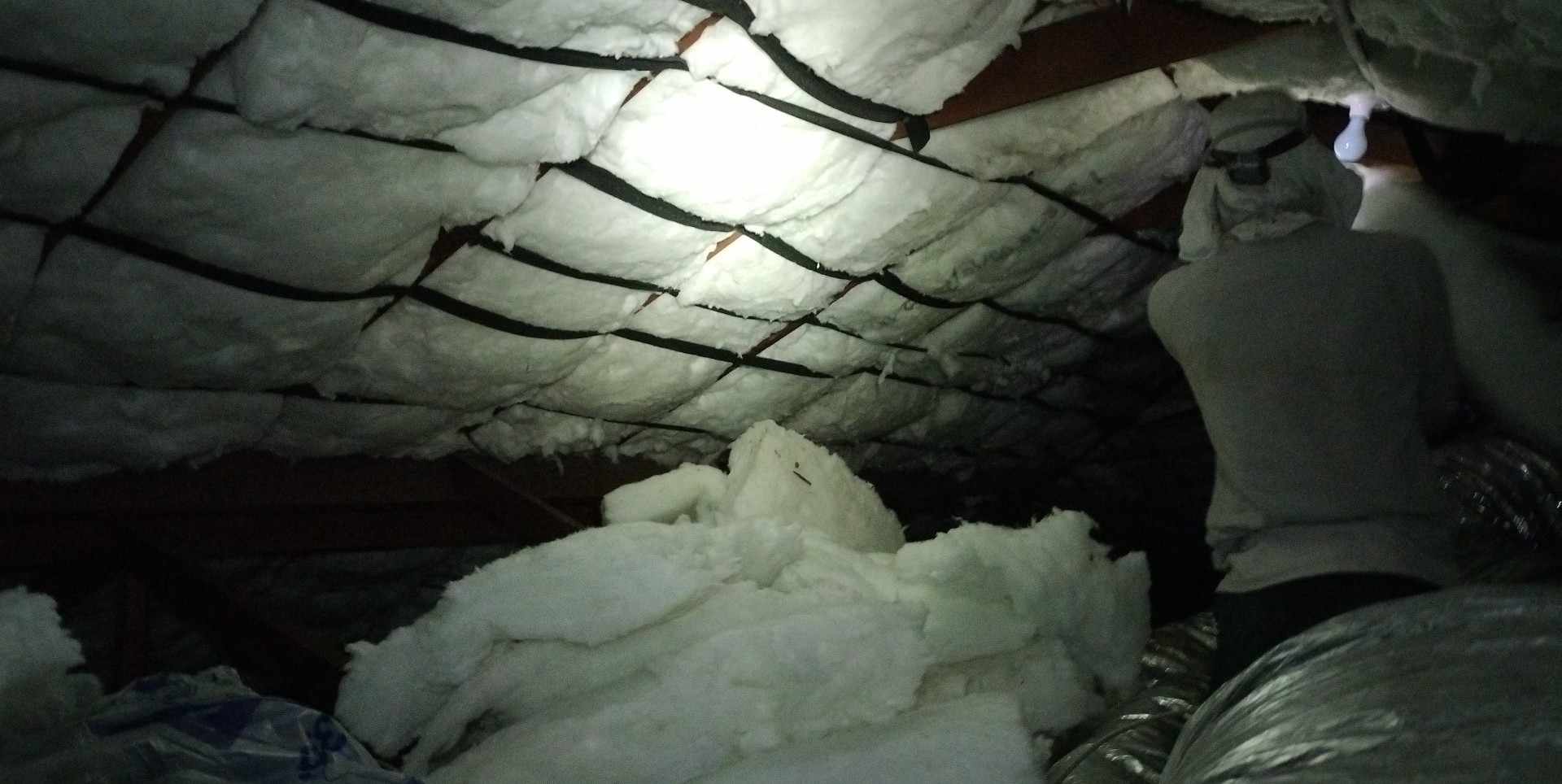Are you looking for ways to reduce your energy bills while also increasing the value of your property? Proper insulation can do both!
The U.S. Department of Energy claims that proper insulation can save energy costs up to 15%. That’s quite a significant saving! Fiberglass Insulation is one of the best options available, as it has been rated both economical and practical. My Insulation Guy offers the best insulation for your home at most reasonable prices and helps in making it more valuable.
In this guide, we will discuss how fiberglass insulation can boost your home’s efficiency and value. So, stay tuned for more valuable information.
Why Choose Fiberglass Insulation?
A large number of homeowners select fiberglass insulation because of its energy efficiency. It also comes in three primary forms:
- Batts and Rolls – Comes as pre-cut sheets for simple installation.
- Blown-in Fiberglass Attic Insulation – Excellent for filling any cracks or spaces.
- Fiberglass Spray Insulation – Allows for no gaps in coverage.
Advantages of fiberglass insulation are as follows:
- Energy Efficiency – Maintains temperature in the home.
- Environmentally Responsible – Uses glass that has already been recycled.
- Cost-Effective – Comes at one of the cheapest prices out of all insulation alternatives.
- Sound Proofing – Provides a reduction in noise transmission.
- Longevity – Can last in good condition for many years when properly taken care of.
- Fire-Resistant – Made using materials that do not burn efficiently.
- Moisture Proof – Aids in preventing the growth of mildew or mold.
How Fiberglass Insulation Works?
Fiberglass insulation slows the transfer of heat by trapping air pockets within its fibers. As a result, indoor temperatures are maintained, which aids in relieving the burden on heating and cooling systems. Both fiberglass attic insulation and fiberglass spray insulation reduce energy costs.
Applications of Fiberglass Insulation
The versatile nature of fiberglass insulation enables its use in multiple areas of your house, including the following:
- Attics – Prevents the loss of heat from the house.
- Walls – Maintains temperature levels in rooms throughout the year.
- Basements – Reduces high levels of moisture and keeps the area warm.
- Crawl Spaces – Prevents floors from getting too cold
Should You Get Fiberglass Insulation?
If you are planning to install fiberglass insulation, keep the following things in mind:
- R-Value: This measures the effectiveness of the insulation. Higher R-Values will guarantee more extraordinary thermal performance.
- Location of Installation: Different parts such as walls, attics, and basements call for different insulation types.
- Moisture Barrier: To avoid moisture problems, choose faced fiberglass insulation.
- Cost: Fiberglass insulation is relatively cheap when compared with other types available in the market.
Fiber Glass Insulation Vs Other Insulation Types

Signs You Need to Remove Fiberglass Insulation
It decreases in effectiveness over some time, so fiberglass insulation removal is essential. You need to remove it if:
- There is visible mold or moisture damage.
- You experience an increase in energy costs.
- It has been more than 15 years since installation.
- Pests have rotten the material.
- It has become compressed and ineffective.
Installing Fiberglass Insulation
Whether it is fiberglass wall insulation or attic fiberglass insulation, you can install it yourself, but be sure to take the proper precautions. Follow these steps:
Step-by-step guide
- Assess Your Area: Determine the extent of insulation required for your project.
- Select The Appropriate Option: Go for batts, rolls, or blown-in insulation.
- Wear Appropriate Safety Equipment: Use goggles, gloves, and a dust mask.
- Fit The Insulation Properly: It should not be too big for the allocated space.
- Put It In Place As Required: Fit it between the studs or rafters.
- Fill All Gaps & Edges: Install vapor barriers if required.
- Ensure There Are No Air Leaks: Caulk or foam any gaps that need sealing.
Conclusion
Improving the insulation in your home is one of the finest investments you can make. Utilising fiberglass insulation will increase the home’s energy efficiency and comfort and raise its overall value. Choosing the right type is critical, whether you require fiberglass attic insulation or fiberglass spray insulation.
The professionals at My Insulation Guy can help you choose the right type of insulation for your home. Properly installed insulation will maximise its efficiency for years to come. For consultations and installations, visit our website and explore tailored solutions for your home.
FAQs Related to Fiberglass Insulation
- How long does fiberglass insulation last?
Fiberglass insulation can last longer. Insulation experts suggest examining it once every 15 to 20 years.
- Can I install fiberglass insulation myself?
It is definitely possible to do it yourself! Although batts and rolls are easily installed, more complex forms of insulation, such as blown-in and spray, require professional assistance.
- Is fiberglass insulation safe?
Fiberglass insulation is safe when properly installed. However, ample protective gear must be worn to avoid fiberglass irritation.
- What is the best fiberglass insulation for attics?
Best suited for attics is blown-in fiberglass because it is more effective in filling gaps.
- Does fiberglass insulation help with noise reduction?
Indeed! It acts as a sound barrier, reducing the noise between rooms and floors, thus assisting with noise reduction.

